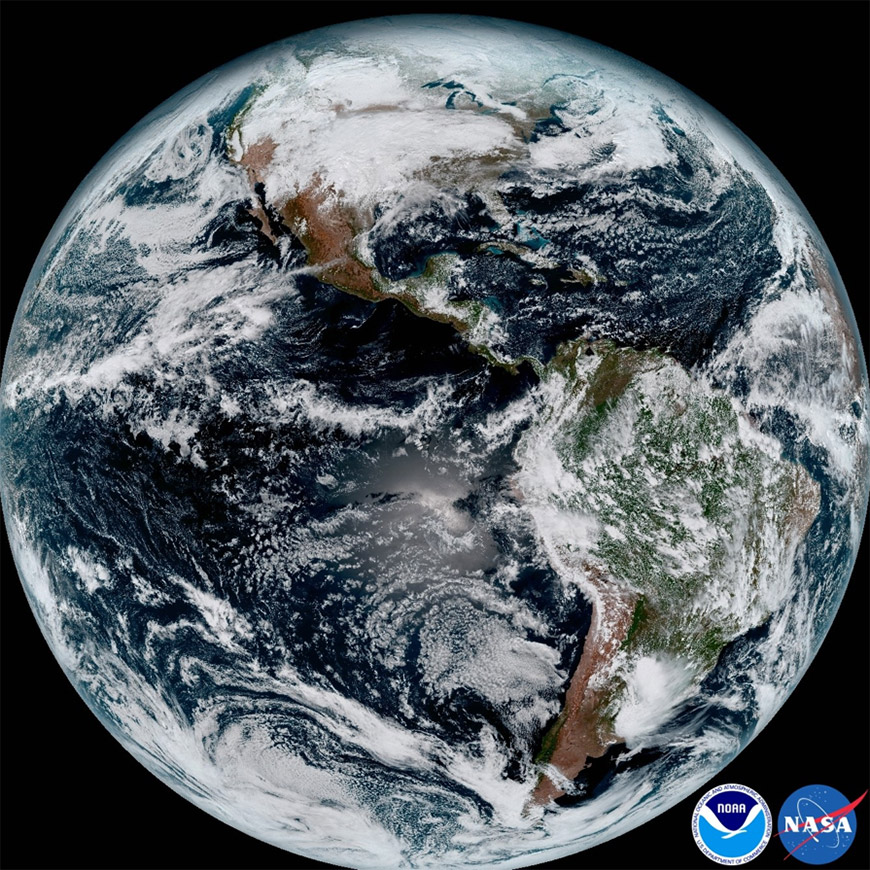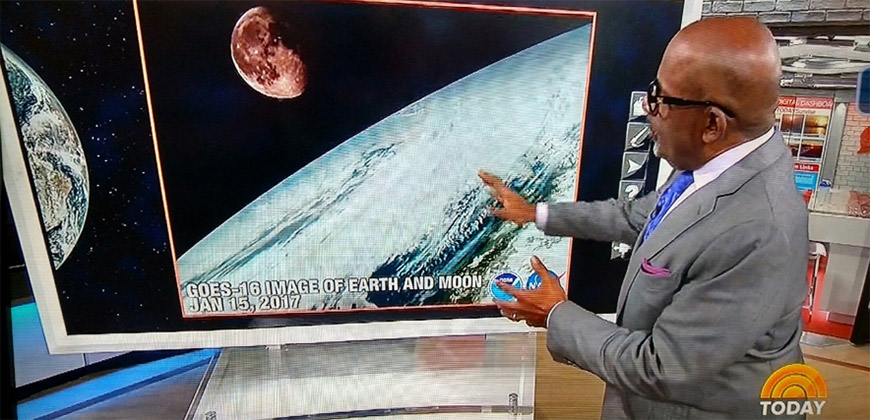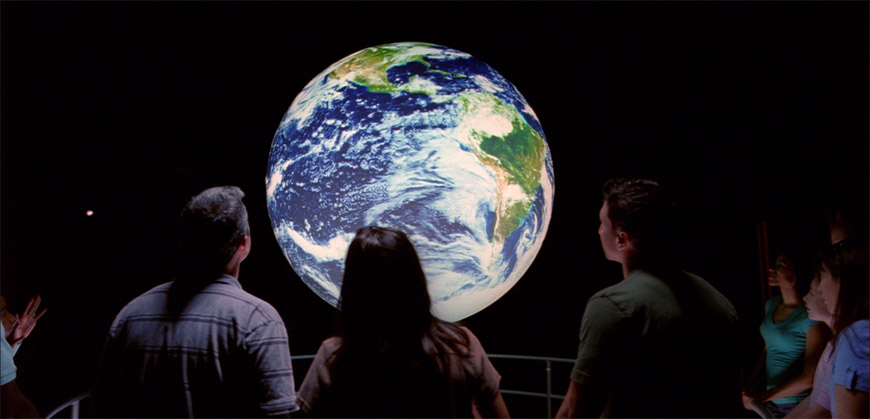
A full-disk, first-light GOES-16 true-color image produced by CIRA in January 2017.
A Colorado State University-based team that works on the nation’s newest weather satellite has been awarded the CO-LABS Governor’s Award for High-Impact Research.
The team, part of CSU’s Cooperative Institute for Research in the Atmosphere (CIRA), is led by CIRA research scientist Steven Miller, in cooperation with the National Oceanic and Atmospheric Administration (NOAA).
The award will be presented to the CIRA team by Colorado Gov. John Hickenlooper at an Oct. 5 gala at the Denver Museum of Nature and Science.
Additionally, the Science on a Sphere (SoS) team, jointly run by CIRA, the Cooperative Institute for Research in the Environmental Sciences at University Colorado-Boulder, and the NOAA Earth Systems Research Laboratory, received an honorable mention.
CO-LABS is a nonprofit organization dedicated to informing the public about breakthroughs and impacts from the 24 federal labs in Colorado.
Seeing Earth in true color
The satellite team at CSU includes Miller, research scientist Curtis Seaman, and federal researcher Dan Lindsey. Together, this team pioneered an algorithm allowing data from the new GOES-16 satellite data to be turned into true-color imagery – a breakthrough that symbolizes a new era in what we can see from geostationary satellites.
The Advanced Baseline Imager (ABI) instrument aboard NOAA’s GOES-16 satellite has only two visible channels – red and blue – but does not contain a green channel needed to make a complete full-color image. The CIRA team devised a novel technique to generate a synthetic green channel using additional ABI data, restoring true-color capabilities to the satellite. This allows for vivid, intuitive color imagery that is vital for operational forecasters and the public to relate satellite imagery to everyday experiences.
True-color imagery from GOES-16 has been used by NOAA and NASA to improve forecasting capabilities, as well as to capture the imagination of the public by providing stunning images of our home planet from space.

Al Roker of NBC’s ‘Today Show’ discusses first-light true-color imagery from GOES-16, which is processed at CIRA. This is an image that shows the Earth and the Moon in true color.
Science on a Sphere
The Science on a Sphere team, which received the honorable mention, has worked to develop an affordable and informative package for school and museum displays of NOAA science. The team works to make Earth science visible and accessible using a 3D globe that can be operated by guests and students. Globes are on display in the Denver Museum of Nature and Science and the Fort Collins Museum of Discovery.

A typical Science on a Sphere installation, with museum guests interacting with a live display of cloud cover on a 3D projection of Earth.